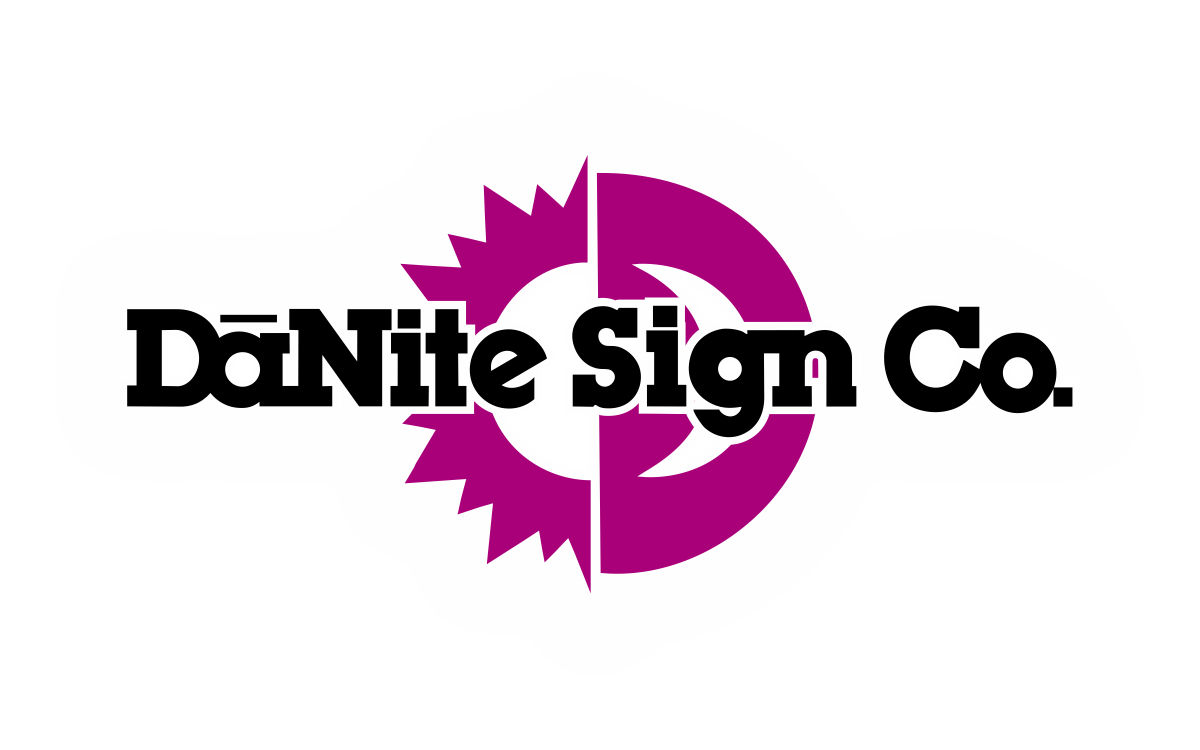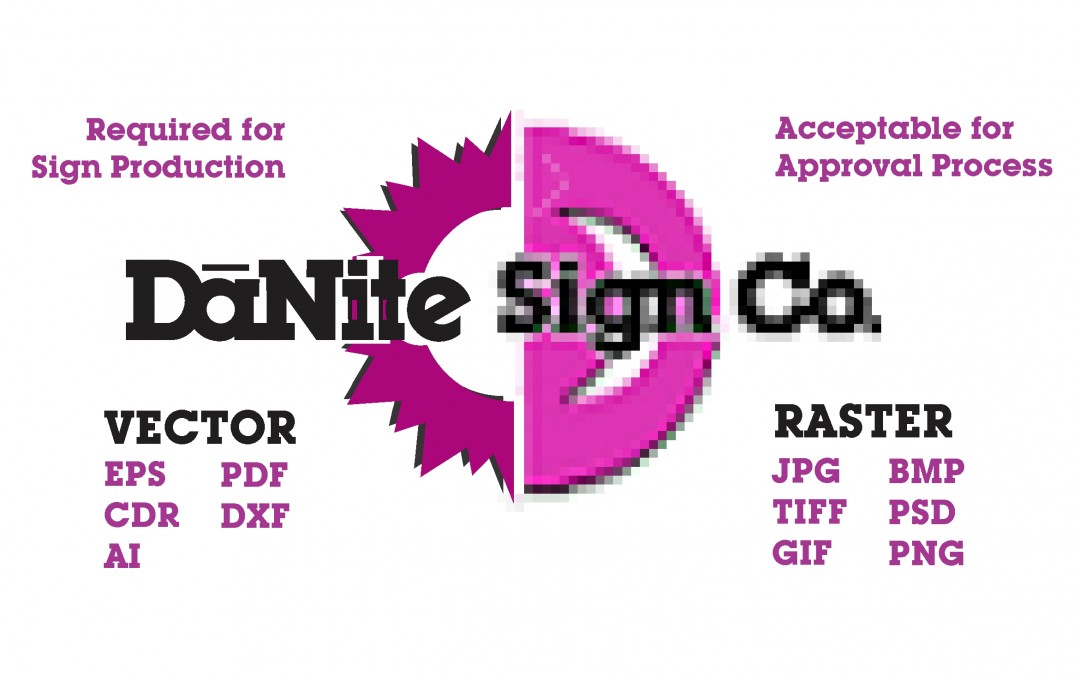Often there is confusion about what kind of image file types can be used for signage. If you’re considering new signs or a new business, be sure to consider the points in this blog while still in the design stage! Many people have never heard of the distinction between raster and vector graphics, but only one type of image file can be enlarged to the size of a sign. Above on the right you can see the what happens when you enlarge a raster graphic as opposed to a vector graphic. The raster graphic becomes pixilated while the vector file retains clarity no matter how large it is enlarged. Raster graphics (like JPEGs) can be helpful for the initial sign design and approval stages, but vector art must be provided when production of the full size sign or banner begins. To be clear, a JPG file can be printed very large, but only if it is sent at the full print size (ie. 48” x 96”) and saved at 72 dpi. This is going to be a big file and email probably won’t be able to handle it. Below is a list of some of the file types under both categories.
VECTOR FILES: EPS, CDR, DXF, AI, & (EDITABLE) PDF
RASTER FILES: JPG, BMP, TIFF, PSD, GIF, & PNG
If you are still in the stages of designing a new logo, ask your designer save it both ways to save yourself hassles down the road. At some point you will need the vector format! Also, make sure they convert all fonts to curves since not all computers have the same fonts on file. Converting to curves will make the computer recognize letters as shapes instead of specific fonts that might have to be identified, hunted down, purchased, and downloaded at a later time.
Printable Pamphlet: Whats Your Vector Victor
Jennifer Bender
Creative Director
DāNite Sign Company



